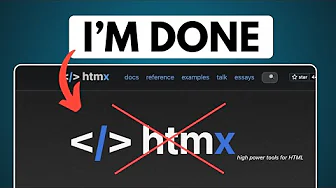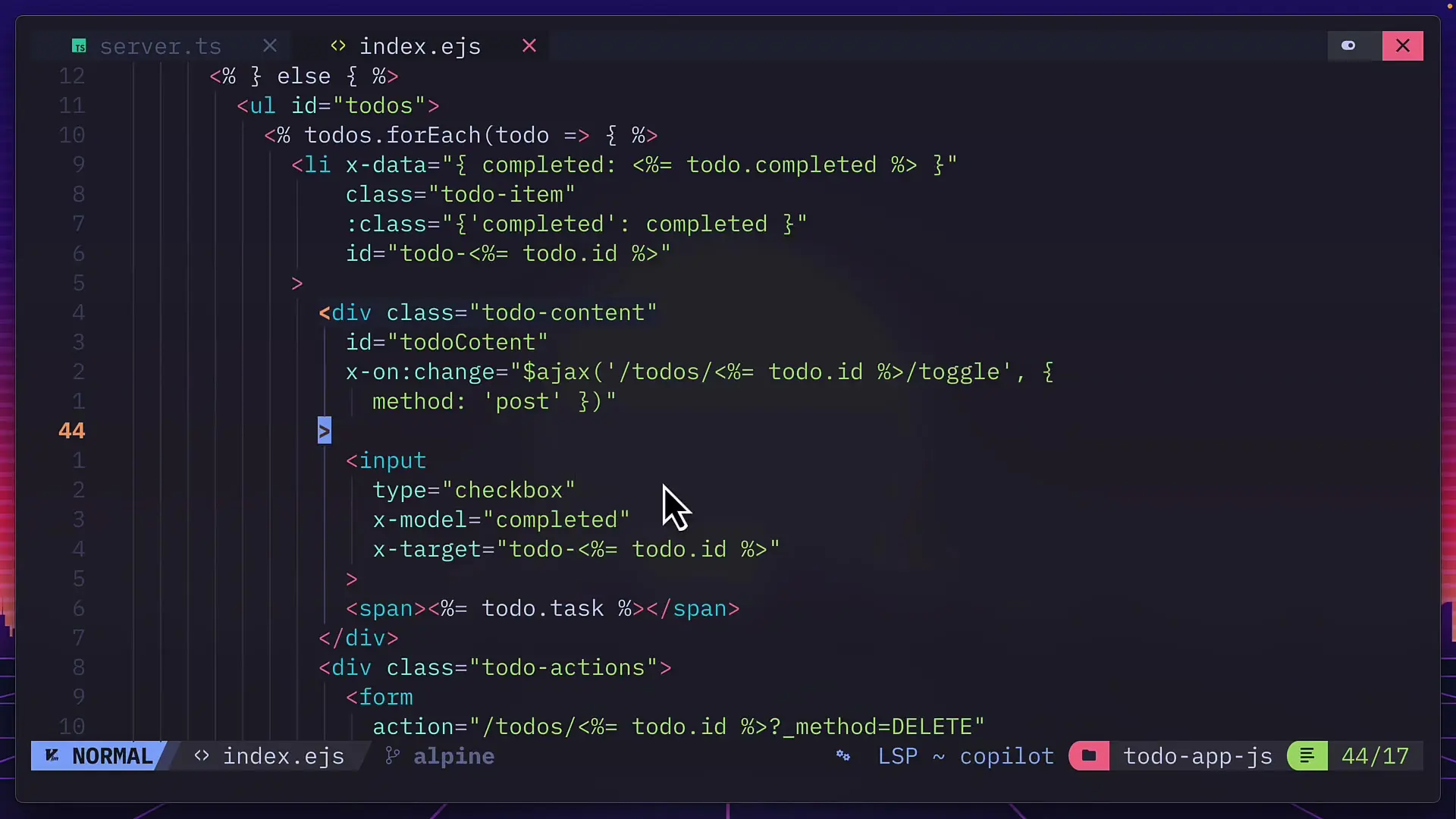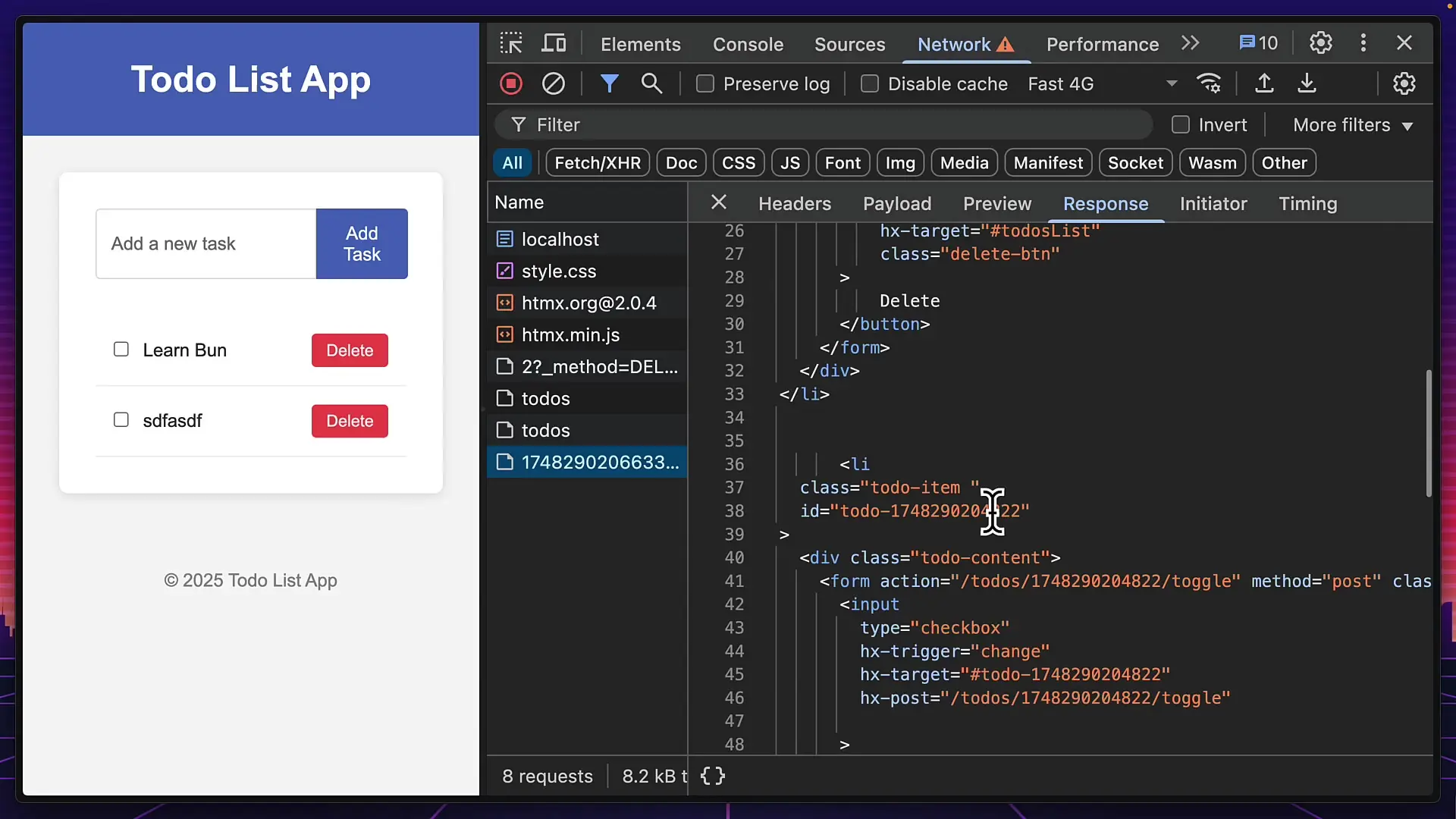
If you're tired of heavy JavaScript frameworks and looking for lightweight alternatives that embrace progressive enhancement, you've likely encountered HTMX and Alpine Ajax. These two libraries offer refreshingly simple approaches to creating dynamic web applications with minimal JavaScript. In this comprehensive comparison of HTMX vs Alpine, we'll explore their features, implementation approaches, and help you decide which one might be right for your next project.
Understanding HTMX: The HTML-First Approach
Released in 2020, HTMX allows developers to make client-to-server requests and update the DOM with HTML from the server's response without triggering full page refreshes. The library comes in at just under 14KB minified and gzipped, making it incredibly lightweight compared to mainstream frameworks.
HTMX works by adding specific HTML attributes to your markup. This declarative approach means you can create dynamic, AJAX-powered interfaces with little to no JavaScript code. However, if you need client-side reactivity or state management, you'll need to supplement HTMX with additional JavaScript.
Key HTMX Attributes
- hx-post/hx-get/hx-delete: Specify the HTTP method and endpoint
- hx-target: Define which element should be updated with the response
- hx-trigger: Determine what event triggers the request
- hx-swap: Control how the response content is inserted into the page
<form hx-post="/todos" hx-target="#todo-list" hx-swap="innerHTML">
<input name="task" placeholder="Add a task">
<button type="submit">Add Task</button>
</form>Introducing Alpine.js and Alpine Ajax
Alpine.js is a minimal JavaScript framework that provides reactivity and state management through HTML attributes. It allows you to add dynamic behavior to your website with a declarative syntax similar to Vue.js, but with a much smaller footprint. Alpine Ajax is a plugin for Alpine.js released in 2023 that adds AJAX capabilities, effectively providing similar functionality to HTMX but within the Alpine ecosystem.
At just under 3KB gzipped, Alpine Ajax is even smaller than HTMX. It integrates seamlessly with Alpine.js, making it an excellent choice if you're already using Alpine for client-side interactivity. This combination gives you both AJAX capabilities and state management in a very lightweight package.

HTMX vs Alpine: Practical Implementation Comparison
To better understand the differences between HTMX vs AlpineJS with Alpine Ajax, let's examine how each library handles common tasks in a simple todo application built with Express.js and EJS templates.
Todo App with HTMX
With HTMX, implementing a dynamic todo list requires modifying both client and server code. On the client side, you add HTMX attributes to your HTML elements. For example, to create a new todo item:
<form hx-post="/todos" hx-target="#todo-list" hx-swap="innerHTML">
<input name="task" placeholder="Enter task">
<button type="submit">Add Task</button>
</form>
<ul id="todo-list">
<!-- Todo items will be inserted here -->
</ul>On the server side, HTMX typically requires adjustments to return partial HTML rather than full pages or redirects. For example, your Express route might look like:
app.post('/todos', (req, res) => {
// Add the new todo to the database
todos.push({ id: Date.now(), task: req.body.task, completed: false });
// Return just the updated todo list HTML partial
res.render('partials/todos', { todos });
});
Todo App with Alpine Ajax
With Alpine Ajax, you can achieve similar functionality while leveraging Alpine's reactivity system. The client-side implementation might look like this:
<div x-data="{ task: '' }">
<form
action="/todos"
method="post"
x-ajax:submit
x-ajax:target="#todos"
x-on:ajax:success="task = ''"
>
<input name="task" x-model="task" placeholder="Enter task">
<button type="submit">Add Task</button>
</form>
<ul id="todos">
<!-- Todo items will be inserted here -->
</ul>
</div>One significant advantage of Alpine Ajax is that it can work with existing server routes without modification. Unlike HTMX, which often requires server-side changes to return partial HTML, Alpine Ajax can handle full HTML responses and intelligently update only the targeted elements. This makes it easier to implement progressive enhancement where the application works both with and without JavaScript enabled.
HTMX vs Alpine Ajax: Key Differences
- Size: Alpine Ajax is smaller (3KB) compared to HTMX (14KB), though both are extremely lightweight
- Integration: Alpine Ajax works seamlessly with Alpine.js, while HTMX is often paired with Alpine.js for state management
- Server Requirements: HTMX typically requires server routes to return partial HTML, while Alpine Ajax can work with existing routes returning full HTML
- Progressive Enhancement: Both support progressive enhancement, but Alpine Ajax may require less code restructuring
- Learning Curve: HTMX has a slightly simpler API, while Alpine Ajax leverages Alpine.js concepts
When to Choose HTMX vs Alpine
When deciding between HTMX vs AlpineJS with Alpine Ajax, consider your specific project requirements:
Choose HTMX when:
- You want a pure HTML-driven approach with minimal JavaScript
- You're building a server-rendered application that needs just a touch of interactivity
- You prefer a library focused solely on AJAX functionality
- You're comfortable restructuring your server routes to return partial HTML
Choose Alpine Ajax when:
- You're already using Alpine.js for client-side interactivity
- You want both AJAX capabilities and state management in one ecosystem
- You prefer to keep your existing server routes unchanged
- You need more complex client-side reactivity alongside AJAX functionality
- You value the smallest possible bundle size
Performance and User Experience Considerations
Both HTMX and Alpine Ajax deliver excellent performance compared to heavier frameworks. They both update the DOM without full page refreshes, making applications feel snappy and responsive. The key difference lies in how they handle responses and integrate with other libraries.
Alpine Ajax has a slight edge in terms of file size and integration with Alpine.js's reactivity system. This combination allows for more sophisticated client-side interactions without significantly increasing bundle size. However, HTMX's simpler approach may be easier to implement for developers new to these patterns.
Conclusion: The Future of Lightweight Web Development
The comparison of HTMX vs Alpine demonstrates that both libraries offer compelling alternatives to heavyweight JavaScript frameworks. They embrace progressive enhancement principles and allow developers to create dynamic, interactive web applications with minimal client-side JavaScript.
While HTMX has been around longer and has a larger community, Alpine Ajax represents an exciting evolution that combines AJAX capabilities with Alpine's elegant reactivity system. For developers already using Alpine.js or those who value the smallest possible bundle size, Alpine Ajax presents a particularly attractive option.
Ultimately, both libraries reflect a growing trend toward simpler, more efficient web development approaches that prioritize performance and progressive enhancement. Whether you choose HTMX or Alpine Ajax, you'll be embracing a more lightweight and maintainable approach to building modern web applications.
Let's Watch!
HTMX vs Alpine Ajax: Which Lightweight Library Wins for Modern Web Development?
Ready to enhance your neural network?
Access our quantum knowledge cores and upgrade your programming abilities.
Initialize Training Sequence